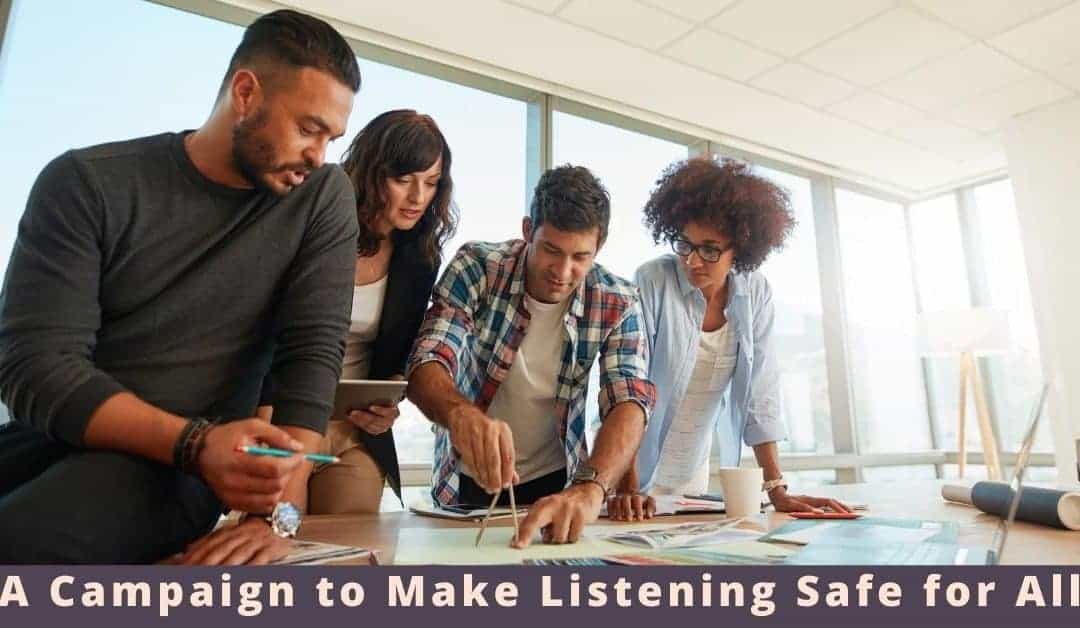Living in an increasingly digital world, we are connected to our electronic devices more than ever. According to the World Health Organization (WHO), 1.1 billion young adults are at risk of hearing loss caused by unsafe use of personal audio devices as well as absorbing loud noise in entertainment venues. Collaborative efforts from various stakeholders, including civil society, are required to implement strategies that mitigate these risks.
Implementing effective hearing protection measures is essential to safeguard against the risks of unsafe listening practices.
The WHO has also launched the Make Listening Safe initiative to address the risks associated with unsafe recreational listening practices.
Specifically, according to WHO, among people between the ages of 12-35:
- 50% listen to unsafe levels of sound through personal audio devices (ex. smartphones)
- 40% are exposed to potentially damaging levels of sound due to recreational exposure to loud sounds at nightclubs, bars, and sporting events
WHO has launched a campaign, Make Listening Safe, to bring attention to the significant risk to hearing health. Key points of this campaign to make listening safe for all include: understanding noise induced hearing loss as well as knowing what you can do to lower the risk for hearing loss due to unsafe listening practices!
Noise Induced Hearing Loss
Hearing loss is a pervasive chronic health condition that millions of people navigate. There are several factors that can contribute to impaired hearing, including existing medical conditions, genetic history, aging, and exposure to loud sound. Noise-induced hearing loss is the result of absorbing harmful levels of noise. Sound is measured in units referred to as decibels, and noise above 85 decibel levels is considered potentially dangerous for our hearing.
- 0 dB: near total silence
- 30dB: whispering
- 50dB: normal conversation
- 80 dB: city traffic, vacuum cleaner
- 100 dB: hand drill, motorcycle
We are often easily (and regularly) exposed to sound above 85 dB: concerts, fireworks, planes taking off, passing a construction site, and the music we listen to using headphones. Consistent absorption of loud noise damages the hair cells in the inner ear.
These hair cells help translate sound waves into electrical signals for the brain to process, which is how we make sense of what we hear. We have thousands of hair cells in each ear, and these hair cells do not regenerate (unlike other types of cells). This means that any damage is permanent, affecting their capacity to carry out their function and resulting in noise-induced hearing loss. Muffled hearing can occur as a temporary condition caused by loud sounds, such as at concerts, due to the sensory cells in the ear being affected by noise.
Regulating sound exposure is crucial to prevent hearing loss, with standards and recommendations aimed at limiting high noise levels from both personal listening devices and environmental sources.
Impact of hearing loss
Hearing loss can drastically affect all aspects of a person’s life. Impaired hearing:
- Strains communication: people often experience tinnitus which is a buzzing or ringing noise in one or both ears, sounds are slurred or muffled, frequently asking others to repeat themselves and/or speak loudly or slowly etc. These symptoms make it challenging to follow entire conversations.
- Social withdrawal: engaging with others can be exhausting and leave a person feeling drained. This can lead to avoiding social interactions, gatherings, activities etc. Spending less time with family and friends impacts relationships and sense of community.
- Overall health decline: strained communication and isolation can take a toll on overall health by contributing to depression, anxiety, stress, etc. Untreated hearing loss also increases the risk of cognitive decline, accidental injuries, and unemployment.
It is important to have your hearing assessed and be proactive about your hearing health by taking measures to make listening safe. Additionally, prioritizing ear and hearing care can prevent the negative impacts of hearing loss, especially among young people exposed to loud sounds.
Hearing conservation strategies are essential to mitigate the negative impacts of hearing loss and ensure long-term auditory health.
Making Listening Safe
There are several ways that you can make listening safe, reducing your risk of developing hearing loss. The creation of evidence-based guidelines for safe listening is crucial in this regard. A few useful tips are:
- Maintain low volume: when listening to music, watching television, listening to podcasts etc. on personal audio systems, you want to be sure that it is less than 85 dB. If you have to raise your voice for someone to hear you or others have to shout to grab your attention, this is an indication that your volume may be too high.
- Use noise-cancelling headphones: noise cancellation technology reduces background noise, allowing you to listen to music at lower volume levels. These safe listening features prevent you from having to increase the volume in louder environments. Incorporating sound level monitoring devices can help you keep track of your exposure to potentially harmful noise levels.
- Wear protective gear: wearing earmuffs or earplugs when navigating loud environments is a useful way to protect your hearing. This type of gear serves as a barrier and prevents your ears from absorbing the loud noise you are around.
Safe listening practices are essential to protect your hearing from damage caused by high-volume listening.
Limit time and take breaks: our ears and auditory system need time to rest and rejuvenate from the constant stimulation we are absorbing. So, taking listening breaks, moving away from loud sounds, limiting daily use of personal audio devices etc. are useful strategies to reduce your exposure. Monitoring your weekly sound dose and adhering to its guidelines can further help in preventing hearing loss.
Avoid unsafe listening practices to minimize the risk of hearing damage.

